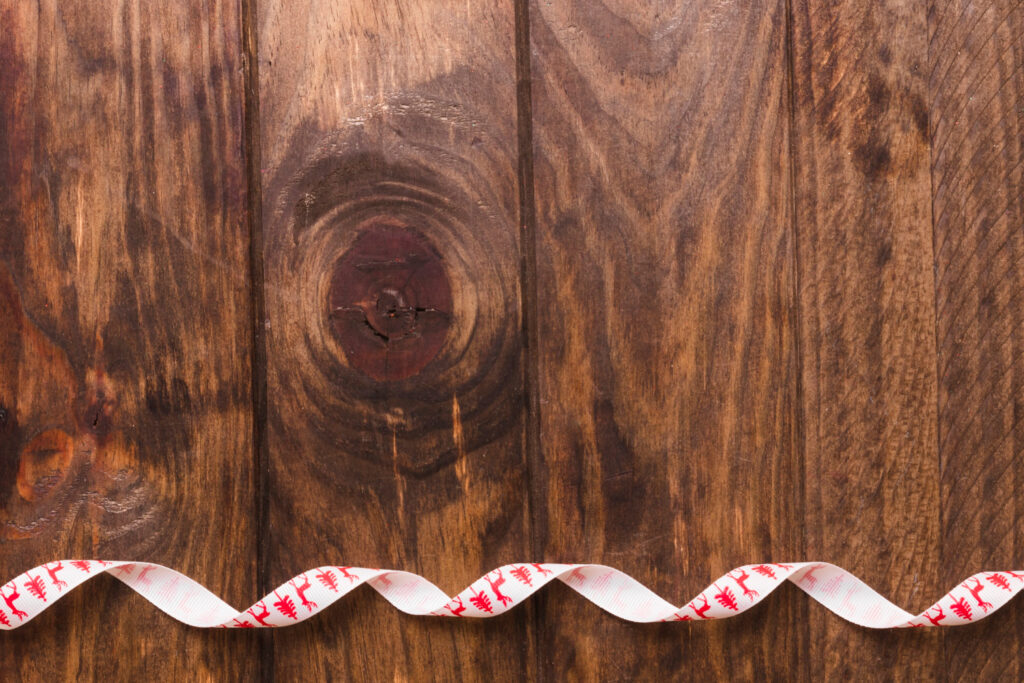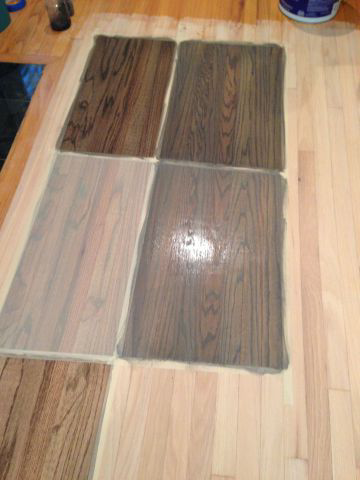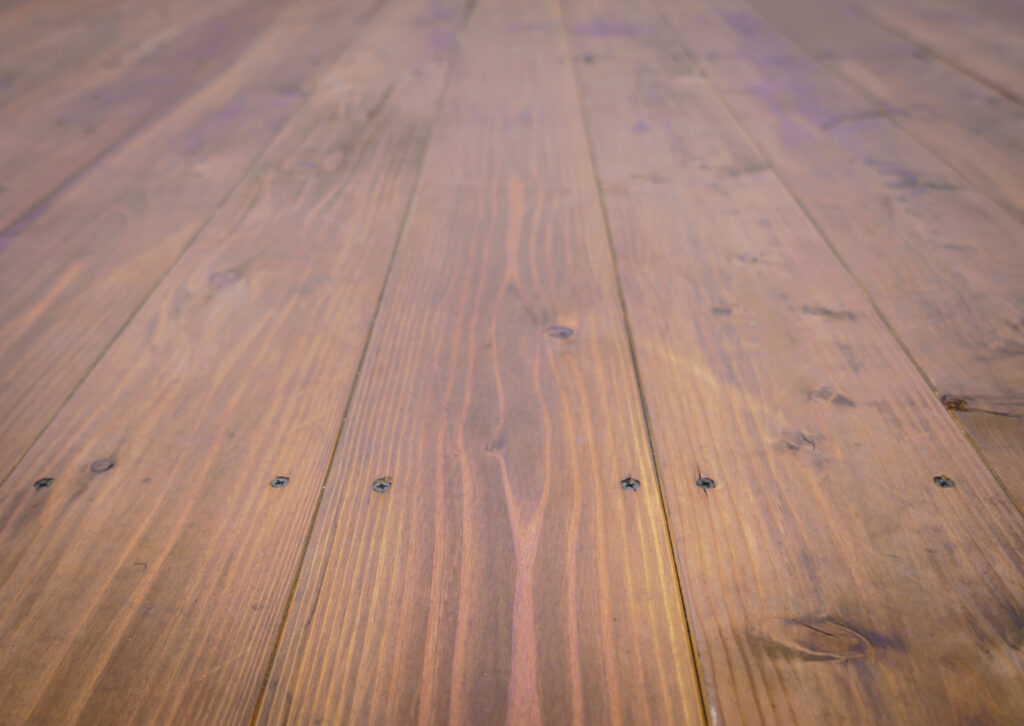A type of wood stain called weathered oak is intended to give wood surfaces—especially oak floors—a rustic, aged look. The stain is designed to resemble the weathering and distressing that naturally happen to wood as a result of exposure to the elements over time.
If you want your red oak flooring to look rustic and old, a common stain option for homeowners is weathered oak. Applying this stain to red oak, however, can be challenging because the wood’s inherent reddish tone can occasionally overshadow the desired worn appearance.
Essential Tips for Staining Red Oak
The following are some essential guidelines for applying a weathered oak finish stain to redwood:
- Make sure the wood is properly prepared. To ensure that the red oak has a smooth, level surface on which the stain will stick, start by lightly sanding it. Refrain from oversanding, as this may cause the wood grain to open up excessively and result in uneven stain absorption.
- Apply a mixture of stains to counterbalance the red hues. To help counteract the redness of the red oak, many experts advise combining different stain colors, such as golden pecan, white wash pickling, and early American. This gives the illusion of being more worn-out and greyed out.
- Carefully apply the stain. Water-based dyes tend to dry rapidly, so to avoid blotchiness, work in tiny parts and wipe off any excess right away. For even application, using a rag or an old baby sock can be helpful.
- Properly seal the stained floorboards. To maintain the finish and accentuate the worn appearance, apply three coats of water-based polyurethane once the stain has set. It is advised to sand lightly in between coats.
- Take into account the surrounding décor and lighting. The final look of the weathered oak stain might change based on the room’s other design components and lighting. Make sure the stain complements your intended look by testing it in various areas.
Your red oak flooring can have a gorgeous, worn oak finish that highlights the wood’s inherent character by using these suggestions and experimenting with different stain mixes.

Types of Weathered Oak Stain
Here are some details on the various kinds of weathered oak stains that are available:
Weathered Oak Stain from Minwax: An oil-based stain for worn oak wood with warm undertones is available from Minwax. This stain applies thinly, reducing any existing color while maintaining the natural wood grain. Use of wood furniture, DIY projects, and hardwood floors is advised. The translucent stain is perfect for reducing the red undertones that naturally occur in woods like oak.
Varathane Weathered Oak Stain: For a variety of wood surfaces, Varathane also offers a weathered oak stain alternative. Although Varathane’s weathered oak stain is not specifically described in the sources above, it is a well-liked option when used with Minwax to create an aged appearance on wood surfaces such as pine.
Applying these stains to different kinds of wood, like pine, plywood, poplar, whitewood, and oak, yields diverse qualities and outcomes. The weathered oak stain reacts differently with different types of wood, giving rise to varied looks that can bring out or mask particular aspects of the wood grain. When choosing a weathered oak stain, it’s critical to take the wood’s natural undertones and grain patterns into account to attain the ideal aesthetic result.

Differences between Oil-based and Water-based Weathered Oak Stain
Here are the key differences between oil-based and water-based weathered oak stains:
Application and Drying Time
Although oil-based weathered oak stains take longer to dry, they provide an extended opening period for smooth application and mixing. Although water-based weathered oak stains dry faster, they must be applied more quickly and precisely to prevent lap marks.
Appearance and Color
Generally speaking, oil-based aged oak stains offer richer, more vivid colors that penetrate deeper into the wood. Although they might not provide color as rich or deep, water-based aged oak stains can nevertheless give the impression of being worn out and grey out.
Durability and Protection
Compared to water-based stains, oil-based aged oak stains are more resilient, water-repellent, and scratch-resistant. Over time, water-based weathered oak stains could become less resilient to severe weather.
Cleanup and VOCs
While water-based weathered oak stains are easier to remove with soap and water and have a milder smell, oil-based stains require solvents for removal.
Weathered oak stains made with water have fewer volatile organic compounds (VOCs) and are therefore usually more eco-friendly.
In the end, oil-based aged oak stains have harsher smells and need more cleanup work, but they also give a richer color, better protection, and quicker application. While water-based alternatives are easier to clean up after, faster to dry, and more ecologically friendly, they could not produce the same level of color depth and worn look. Selection is based on individual tastes and the requirements of the particular project.
Best Brands for Other Types of Wood Stain
Here are some recommendations for the top brands of wood stains other than aged oak:
Super Jotun Demidekk: The sources claim that professionals rank Jotun Demidekk Ultimate among the best wood stains for both internal and exterior use. It is renowned for providing color retention and protection for more than ten years.
Sadolin Superdec: Another highly regarded wood stain brand that offers more than ten years of protection and durable color is Sadolin Superdec. Both opaque and transparent coatings are offered.
Sadolin Extra Durable Woodstain: The Extra Durable Woodstain range from Sadolin is a well-known brand that is commended for both its color selection and longevity.
Dulux Trade Ultimate Opaque and Woodstain: Considered a leading paint and wood care brand, Dulux Trade produces highly acclaimed opaque and transparent wood stain products.
Johnstone’s Trade Woodworks: This well-known company also produces a range of wood stains, such as their lines of opaque wood finish and satin wood stain.
Osmo Country Shades: This business lets customers tint wood stains to any color they like with their Country Shades collection. This offers further customization choices.
According to the authorities, it’s crucial to take into account various aspects when choosing a wood stain, including the type of wood being stained, the intended application (indoor vs. outdoor), and the required amount of opacity. Reputable brands that offer a variety of finishes and color choices and are known for manufacturing long-lasting, high-quality wood stain products include Jotun, Sadolin, Dulux, Johnstone’s, and Osmo.
For more home improvement tips, read: How to Clean Leather
FAQs (Frequently Asked Questions)
Which color stain suits red oak the best?
Yellow-tinted stains work well on red oak because they lessen the tree’s redness. Golden oak, nutmeg, weathered oak, and classic grey are a few stains that work nicely for it.
Which hue neutralizes red oak?
A light brown stain is created by combining 3 parts Onyx, 1 part Yellow, and 40 parts Clear Base. Onyx and Yellow can readily neutralize red tints, leaving behind a light wood tone with a hint of brown.
How can one modernize the look of red oak?
Now, you need to consider what you want that red oak to accomplish when you’re creating a color story around the orange. Utilizing hues that are near orange on the color wheel, such as yellow and red-orange, will help the trim blend in and be invisible to the naked eye.
For what kind of wood surfaces does a weathered oak stain usually last?
Weathered oak stain lifespan varies with wood surfaces and is influenced by sun exposure, wear and tear, and maintenance. Staining that has been properly sealed and maintained might look weathered for several years before needing to be reapplied.
Bottom Line
On red oak flooring, achieving an aged oak finish requires meticulous application, sealing, and preparation methods. Homeowners can create gorgeously weathered masterpieces on their wood surfaces by choosing high-quality stains from reliable companies like Minwax and Varathane, understanding the distinctions between oil-based and water-based choices, and applying advice from experts. The secret to getting amazing results that highlight the inherent beauty of the wood is knowing the steps involved and choosing the proper supplies, whether you’re looking to explore alternative wood stain options or give your oak a rustic appeal.

